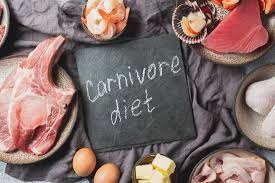It’s the new weight loss fad on the block noone saw coming: the carnivore diet. For the uninitiated, the carnivore diet does exactly what it says on the packet: a meat-only eating regime, where anything that doesn’t come from an animal (think: vegetables, fruit, grains) is strictly off-limits. What’s left on the menu is… well, not much: red meat is the preference – with beef and lamb favoured most heavily. Animal products like eggs, dairy and offal (such as pâté, foie gras, sweetbreads) are also ok, but that’s about it. The very limited number of foods on offer may contribute at least in part, to its alleged weight loss efficacy, for most people, there is only so much steak one can eat (or afford). In an age when plant-based eating has never been more popular, the rise of the carnivore diet seems unlikely. But like any weightloss trend worth its hashtag, the carnivore diet can thank social media – at least in part – for its rise to infamy. Beyond its extreme restriction, there’s another factor that may explain its so-called success: protein. With nothing but animal products on the menu, you can’t help but eat but consume a very high protein, totally no carb intake. And that, at least in the short term, can lead to weightloss. “Although not guaranteed, the carnivore diet might result in weight loss as it is very high protein from only allowing meat and animal products to be consumed,” explains The Lifestyle Dietitian’s Erika Hung. “Protein is one of the most filling nutrients so it may lead to eating fewer calories therefore weight loss.” But is it sustainable? And what are the other health implications of eating nothing but meat? We delve into the science to find out… What is the carnivore diet? The carnivore diet is a high-protein diet that relies on animal products and excludes all plant-based foods such as fruit, grains and vegetables. What makes it different from other high-protein eating plans, is that the carnivore diets is strictly no carbs, at all. People who adhere to carnivore diet usually eat red meat, such as beef, lamb, goat, as well as eggs and dairy products. Meanwhile, animal protein sources, such as pork, poultry, and seafood, are permitted but less commonly eaten (1). Carnivore diet vs paleo, what is the difference? There are clear similiarities between the paleo and carnivore diets. Both are very high in protein. However, the paleo diet allows plant-based food consumption, such as fruit, veggies, and nuts. Therefore, carbohydrates equate for about 25% of the total energy intake, protein for about 30% of total energy intake, and the rest is fat (2). The main idea of paleo diet is eating wild and natural foods such as fruit, veggies, meat fish, nuts, and eggs that were commonly consumed during the paleolithic era before industrial farming methods were developed, (2). Grains, dairy products, sugar, salt, and processed foods are all off limits in both diets (2).


